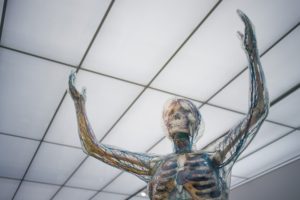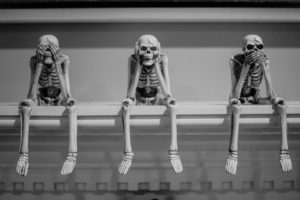Ever hear grandma say “Oh my aching bones”? What is she actually referring to? In order to answer that, we need to gather some preliminary information about our skeletal system and how it works.
Your Bones are Alive!

Don’t think for one second that just because they are hard like a rock, you might think that they perform no service to the body, contrary to our organs like the heart and lungs which maintain blood flow and help us healthy.
What Are Bones Made of?
Your bones are made up of virtually the same materials. Here are the layers that comprise the bones:
-
-
- periosteum – dense membrane that contains the nerves and blood vessels.
- compact bone. This layer is smooth hard. It’s the part you see when you look at a skeleton.
- cancellous – looks a bit like a sponge, but it’s actually very strong.
- bone marrow looks like jelly and its job is to make blood cells.
-
Here’s a brief overview of the bone sections in your body:
The Spine
The spine is the one part that gives you that flexible ability to twist around. It is actually a combination of 33 bones. They are referred to as vertebrae and each of these 33 vertebrae formed like a ring. Put your hands on your back and you can actually feel it! (Wait for our upcoming article that details the vertebrae.)
The Ribs

Think of your ribs as the security guard that circles your heart and lungs. The ribs are broken up in twos – left and right sides and each side is identical to the other. 12 sets of ribs are what most people have. Every one of the 12 sets of ribs appends to the back to the spine, where they are held by the thoracic vertebrae. The initial seven sets of ribs append in the front to the sternum – a solid bone in the focal point of your chest that holds those ribs together.
Your skull protects the most important part of all, the brain. You can feel your skull by pushing on your head, especially in the back a few inches above your neck. The skull is actually made up of different bones. Some of these bones protect your brain, whereas others make up the structure of your face. If you touch beneath your eyes, you can feel the ridge of the bone that forms the hole where your eye sits. And although you can’t see it, the smallest bone in your whole body is in your head, too.
The stirrup bone behind your eardrum is only .1 to .13 inches long. Your lower jawbone is the only bone in your head that can move. It opens and closes to let you talk and chew.
The Hands
We’ve all heard of carpal tunnel. Well, that is one factor that can happen to your hands, As you sit and type at the keyboard, even when you pick up a phone, you’re using the bones in your fingers, hand, wrist, and arm. Each arm is attached to a shoulder blade or scapula, a large triangular bone on the upper back corner of each side of the ribcage.
The arm is made up of three bones: the humerus which is above your elbow, and the radius and ulna, which are below the elbow. The center part of your hand is made up of five separate bones.
The Legs
Your legs are attached to a circular group of bones called your pelvis. The pelvis is a bowl-shaped structure that supports the spine. It is made up of the two large hip bones in front, and behind are the sacrum and the coccyx. The pelvis acts as a tough ring of protection around parts of the digestive system, parts of the urinary system, and parts of the reproductive system.
Leg bones are very large and strong to help support the weight of your body. The bone that goes from your pelvis to your knee is called the femur and it’s the longest bone in your body.
The Joints
The place where two bones meet in your body is called a joint. Some joints move and others don’t. Fixed joints are fixed in place and don’t move at all. Your skull has some of these joints which close up the bones of the skull in a young person’s head.
Moving joints are the ones that let you twist and turn. Other joints move a lot. One of the main types of moving joints is called a hinge joint. Your elbows and knees each have hinge joints, adequately called that because they are similar to hinges on a door.
Similar to putting oil on a hinge to make it stop squeaking? The joints come with their own special fluid called synovial fluid that helps them move freely. Bones are held together at the joints by ligaments which are like very strong rubber bands.
Conclusion
All in all, your bones play a significant role every day. Stay tuned for a detailed account of just how each of these bone sections works!
